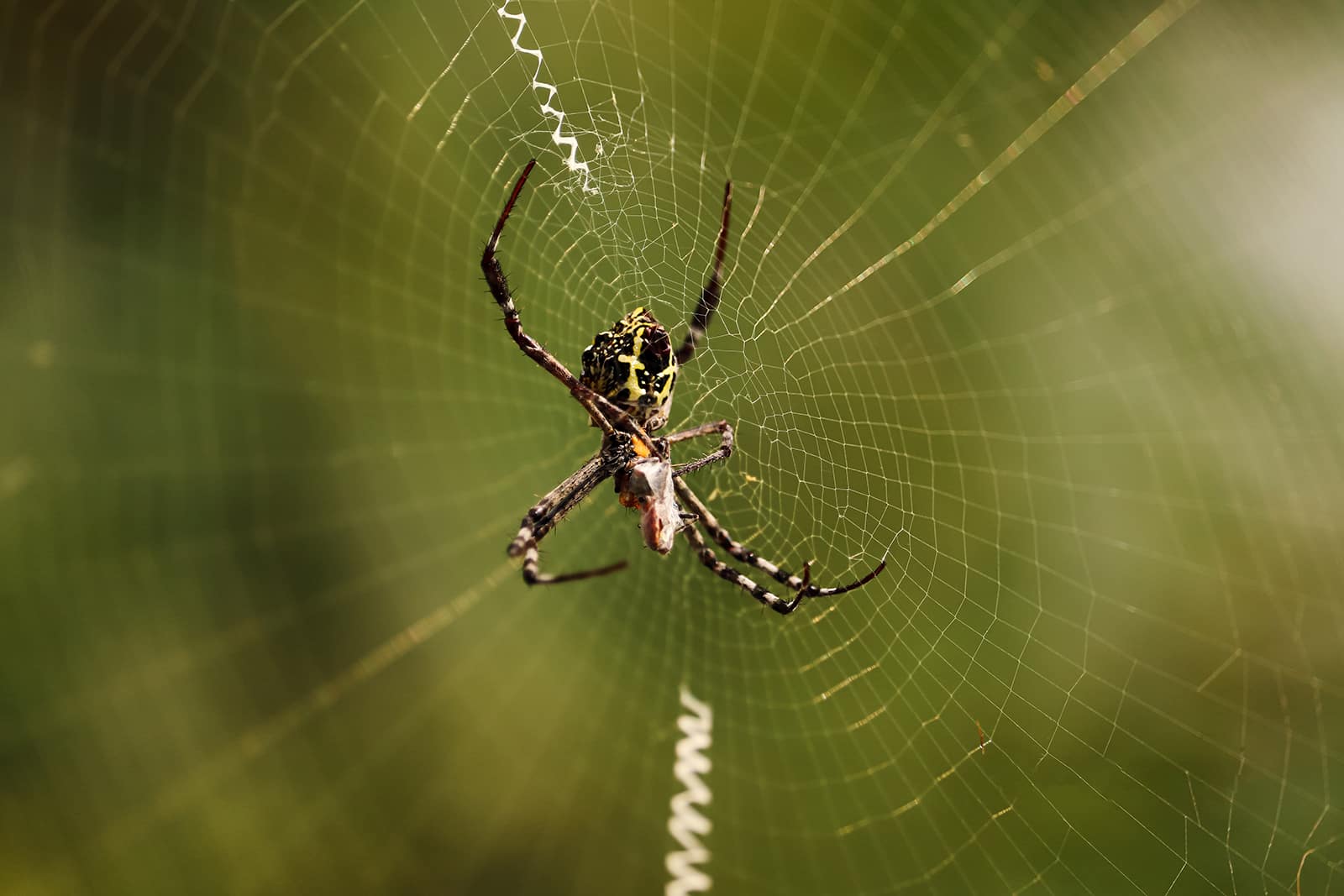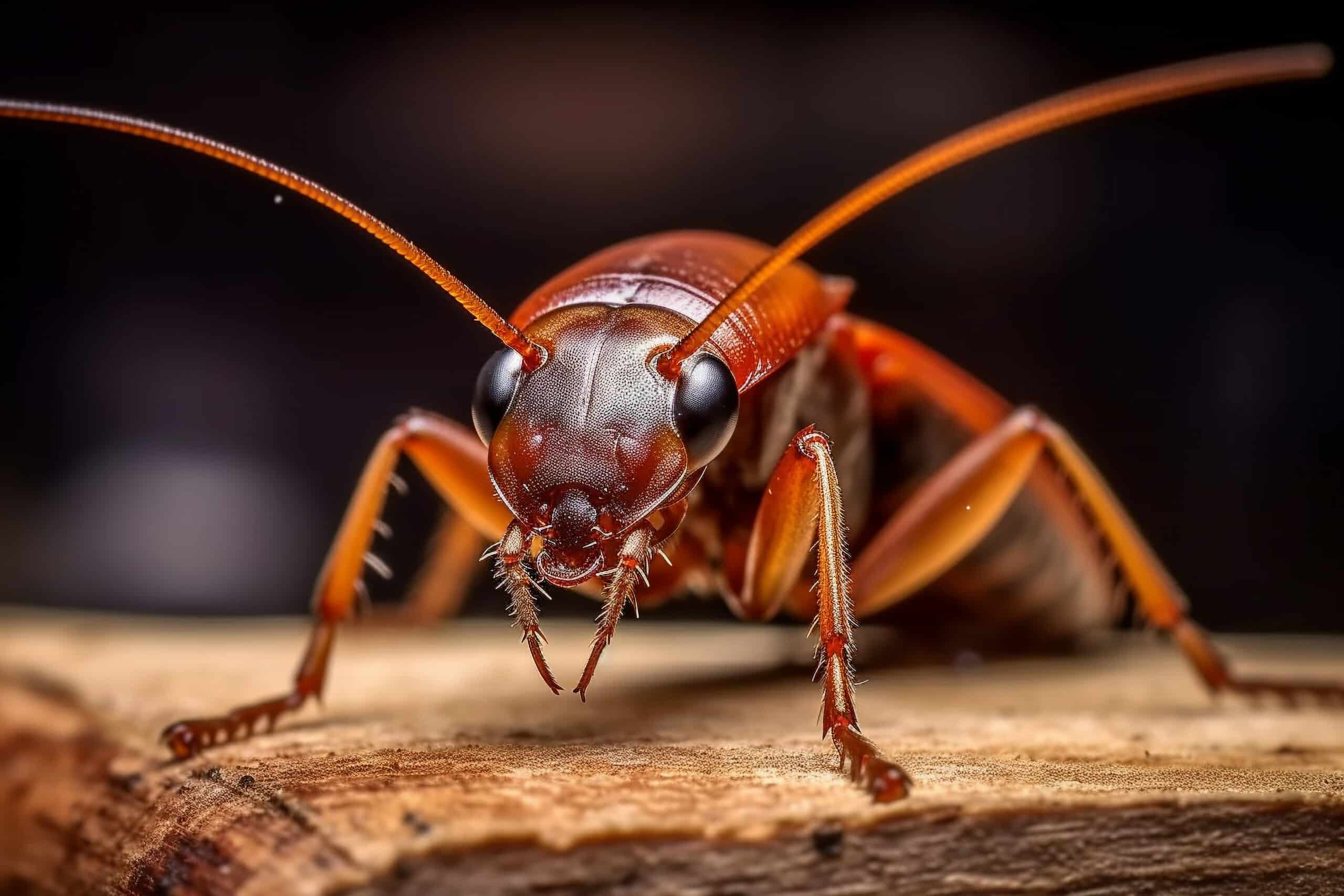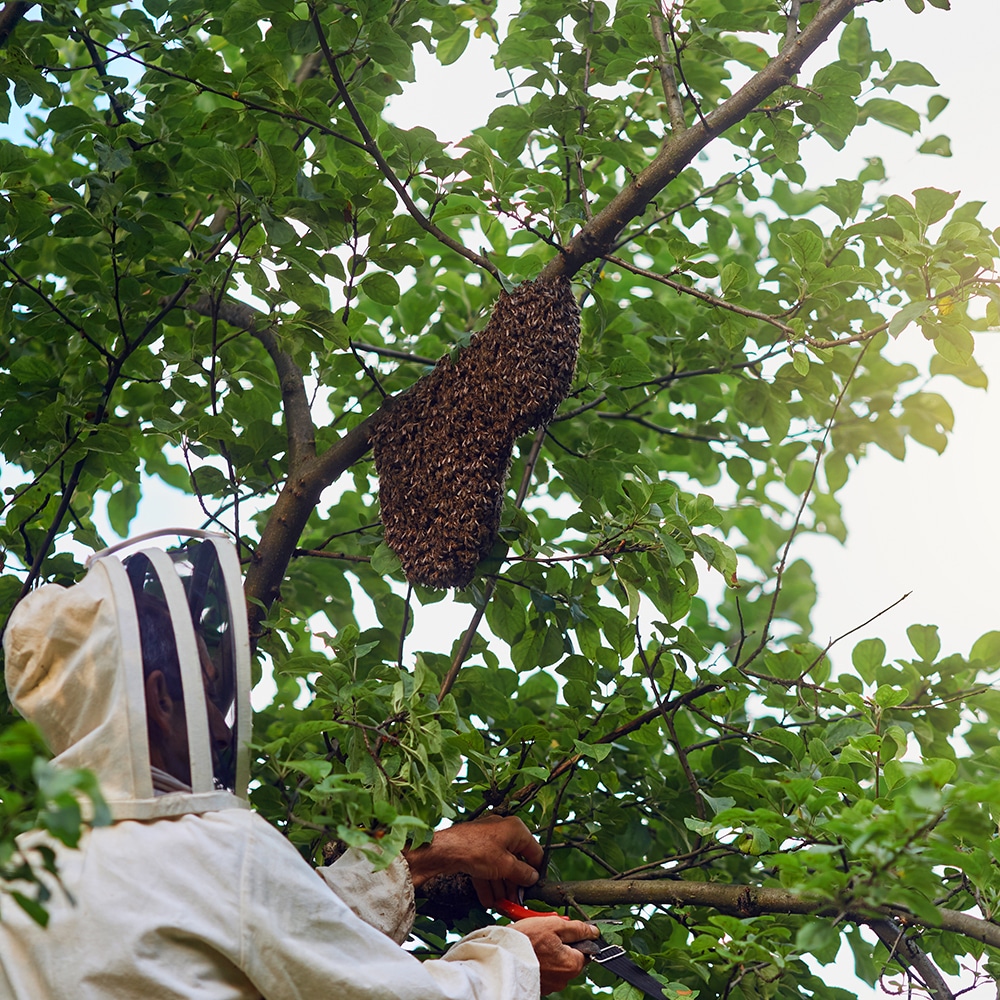
Why Do Spiders Come Back And Why
Why Do Spiders Come Back And Why On The Central Coast NSW. Responsive Proactive Solutions. Detail-focused for lasting results. Call Adam on 0431 222 894
Dealing with cockroach infestations? Learn “How to Prevent Cockroaches from Coming Back After Treatment.” For expert advice on the Central Coast NSW, visit Vital Pest Control. Discover why these pests return and how to keep them away.
Why do cockroaches keep coming back?
Cockroaches thrive in warm, moist environments. If conditions remain favourable, they return. Crumbs and clutter also invite them back. Identifying these triggers helps maintain a roach-free home.
How long do cockroach treatments last?
Most treatments offer protection for three to six months. However, consistent cleaning and monitoring extend effectiveness. Schedule regular follow-ups to ensure lasting results.
Best cleaning habits to prevent reinfestation
Clean regularly to avoid attracting cockroaches. Focus on the kitchen and bathroom. Wipe surfaces, vacuum floors, and dispose of garbage promptly. These habits keep pests at bay.
How to seal entry points to keep cockroaches out
Seal cracks and crevices in walls and floors. Fit weather strips on doors and windows. Regularly inspect entry points to prevent cockroaches from sneaking in.
The importance of proper food storage
Store food in airtight containers. Cockroaches are drawn to exposed food. Keeping food sealed denies them a food source, deterring their return.
How humidity levels affect cockroach infestations
High humidity attracts cockroaches. Use dehumidifiers and fans to reduce moisture. Fix leaks promptly to maintain a dry environment.
Why regular pest inspections matter
Regular inspections help spot early signs of infestation. Early detection ensures timely intervention, reducing the chance of a full-blown problem.
Do essential oils really repel cockroaches?
Essential oils like peppermint can deter cockroaches. However, they are not foolproof. Combine oils with other preventive measures for best results.
Discover how we can help you today! Visit our Contact page for more information.

Cockroaches are persistent pests, making them a common issue for many households in Central Coast NSW. Despite effective treatments, these resilient insects often return, leaving residents frustrated. Understanding why cockroaches keep coming back can help you tackle the problem more effectively.
Adaptability and Survival Skills
Cockroaches have remarkable adaptability. They can thrive in various environments, making it challenging to eliminate them completely. These insects can survive on minimal resources, even feeding on soap or glue if necessary. Their ability to hide in tiny crevices allows them to evade many treatment methods, ensuring some survivors remain to repopulate.
Breeding Habits
Cockroaches breed rapidly, with females often producing multiple egg cases in a lifetime. Each egg case can contain numerous offspring, which mature quickly. This rapid reproduction cycle means that even a small number of surviving cockroaches can lead to a significant infestation in no time.
Re-Entry from External Sources
Even after thorough treatment, cockroaches can re-enter homes from external sources. They often enter through cracks, vents, or open doors and windows. Nearby infested areas, like neighbouring properties or communal spaces, can also be a source of new invasions, making it crucial to address these potential entry points.
For residents on the Central Coast NSW, understanding the longevity of cockroach treatments is crucial for maintaining a pest-free home. After investing in professional pest control services, knowing how long these treatments last helps in planning follow-ups and implementing preventive measures.
Factors Influencing Treatment Duration
The lifespan of cockroach treatments can vary due to several factors. The extent of the infestation plays a significant role; more severe infestations might require multiple treatments. The type of treatment used, whether chemical or natural, also affects longevity. Chemical treatments generally offer longer-lasting results compared to natural alternatives. Moreover, environmental conditions, such as humidity levels and nearby food sources, can impact the effectiveness of the treatment.
Typical Duration of Effectiveness
Professional cockroach treatments typically last between three to six months. This timeframe provides a window during which the chemicals remain potent enough to eliminate any new cockroaches entering the area. It’s essential to follow the pest control provider’s advice on when to schedule follow-up treatments to maintain control. Regular inspections and ongoing maintenance contribute to extending the effectiveness of the initial treatment.
Steps to Prolong Treatment Success
To ensure cockroach treatments last as long as possible, homeowners should adopt preventive measures. Keeping the home clean and free of food debris reduces the likelihood of attracting roaches. Sealing cracks and crevices where cockroaches can enter further strengthens the barrier provided by treatments. Consistent monitoring and swift action at the first sign of re-infestation help sustain a pest-free environment on the Central Coast NSW.
Keeping cockroaches at bay after a treatment requires consistent cleaning habits. Vital Pest Control on the Central Coast NSW offers valuable insights to prevent reinfestation. Adopting a proactive approach ensures your home remains cockroach-free, maintaining both hygiene and peace of mind.
Regular Kitchen Maintenance
Cockroaches often find their way back through crumbs and spills in the kitchen. Wipe down benchtops and sweep floors daily to remove food particles. Keep sinks free of standing water and ensure food is stored in airtight containers. Regularly empty the rubbish bin and clean it to deter these pests from returning.
Bathroom Cleanliness
The damp environment of bathrooms attracts cockroaches. Keep surfaces dry by wiping them after use. Fix leaky taps and pipes promptly to prevent moisture accumulation. Clean drains regularly and ensure that bathroom vents are clear to reduce humidity, making the space less inviting for cockroaches.
Declutter Your Space
Clutter provides hiding spots for cockroaches. Regularly organise and declutter your home to eliminate these hiding places. Store items in sealed containers and keep floors clear. By reducing clutter, you minimise the chances of cockroaches finding refuge in your home.
Keeping cockroaches at bay on the Central Coast NSW requires more than just treatment. Sealing entry points effectively ensures these pests do not return. Identifying and addressing these areas can significantly reduce the chance of future infestations, making your home a cockroach-free zone.
Identify Common Entry Points
Cockroaches often sneak in through cracks, gaps, and holes. Check around doors, windows, and utility lines. Pay attention to spaces under sinks and near drains, as these are popular spots. Identifying these potential entry points is the first step in sealing them effectively.
Use Appropriate Sealants
Once you have identified the entry points, choose the right sealant. Silicone caulk works well for small gaps around windows and doors. Expanding foam can fill larger holes, especially around utility lines. By using the appropriate sealant, you can create a barrier that cockroaches cannot pass.
Install Door Sweeps and Weather Stripping
Prevent cockroaches from entering through door gaps by installing door sweeps. Weather stripping around windows and doors also helps keep these pests out. These simple additions can block cockroach entry quite effectively, contributing to a pest-free home.
Sealing entry points is a proactive step in pest control. By taking these measures, you protect your home from future cockroach invasions, ensuring a healthier and more comfortable living environment.
Proper food storage plays a pivotal role in maintaining vital pest control on the Central Coast, NSW, especially after dealing with a cockroach infestation. Once treatment has been applied, preventing their return is crucial. By ensuring food is stored correctly, you create an inhospitable environment for these unwanted guests, making it essential for long-term pest control success.
Sealed Containers Prevent Access
Storing food in sealed containers is one of the most effective ways to keep cockroaches at bay. Airtight containers block access to food, removing a primary attraction. This simple step protects your food and reduces the chances of pests finding a reason to stick around. Opt for glass or sturdy plastic containers for durability.
Regular Cleaning Reduces Food Sources
Regular cleaning eliminates crumbs and spills that can attract cockroaches. Wipe surfaces, clean floors, and maintain a clean kitchen to minimise food particles. A clean environment complements proper storage, ensuring pests find nothing to feed on, which helps in controlling their population effectively.
Organise Pantries to Monitor Stock
Organising your pantry helps in monitoring food stock and identifying any pest activity early. Arrange items in a way that allows easy access and visibility. This practice not only aids in food management but also ensures that you can spot any signs of cockroach intrusion quickly, taking action before they become a problem.
Humidity levels play a significant role in cockroach infestations, especially in regions like the Central Coast NSW. These pests thrive in environments that offer warmth and moisture, making humid areas particularly attractive. Understanding how humidity influences cockroach behaviour can help in effectively preventing their return after treatment.
Humidity and Cockroach Survival
High humidity provides the ideal conditions for cockroach survival. These insects are drawn to damp environments where they can easily find water, a critical resource for their sustenance. Areas like kitchens, bathrooms, and basements become prime targets due to moisture accumulation. By controlling humidity levels, you can significantly reduce the likelihood of a cockroach infestation.
Breeding Conditions
Moisture not only aids in survival but also accelerates cockroach breeding. Humid environments facilitate the rapid reproduction of these pests, leading to larger infestations. By maintaining a dry environment, you disrupt their breeding cycle, making it harder for them to multiply. Using dehumidifiers or ensuring proper ventilation can be effective strategies in curbing their growth.
Prevention Strategies
To prevent cockroaches from returning, regularly check for leaks and ensure good airflow in your home. Sealing cracks and using humidity absorbers can also deter these pests. By managing humidity, you create an inhospitable environment for cockroaches, supporting the effectiveness of pest treatments.
Regular pest inspections play a crucial role in maintaining a pest-free environment, especially for locations like the Central Coast NSW. With its unique climate, the area can become a hotbed for pests such as cockroaches. Vital Pest Control ensures these inspections are thorough, providing peace of mind and a healthier living space.
Early Detection of Infestations
Early detection is key to preventing a full-blown infestation. Regular pest inspections by Vital Pest Control help identify signs of cockroach activity before they multiply. This proactive approach allows for swift action, reducing the risk of damage to your property and health hazards associated with pests.
Effective Prevention Strategies
Inspections aren’t just about finding existing problems. They also help in developing effective prevention strategies. Professionals from Vital Pest Control assess potential entry points and suggest practical measures to seal them. This tailored advice ensures your property remains unattractive to cockroaches and other pests.
Cost Efficiency
Regular inspections save money in the long run. By catching issues early, you avoid costly treatments and repairs. Vital Pest Control provides cost-effective solutions that protect your investment, ensuring your property stays in top condition without breaking the bank.
Essential oils are often touted as natural remedies for various household pests, including cockroaches. But do these fragrant oils genuinely repel these resilient insects? Understanding the effectiveness of essential oils can help you decide if they are a viable option for pest control on the Central Coast of NSW.
The Science Behind Essential Oils
Essential oils like peppermint, eucalyptus, and tea tree are popular choices for repelling cockroaches. These oils contain compounds that are believed to interfere with the cockroach’s nervous system. While some studies suggest that certain essential oils can deter cockroaches, the results are not always consistent. The effectiveness often depends on the concentration and method of application. It’s crucial to note that while essential oils may provide a temporary solution, they might not offer long-term prevention.
Application Methods Matter
To maximise the potential of essential oils, proper application is key. Spraying diluted essential oils around entry points or areas frequented by roaches can create an uncomfortable environment for them. However, essential oils can evaporate quickly, reducing their effectiveness over time. Regular reapplication is necessary, which might be more labour-intensive than other pest control methods. For residents on the Central Coast, combining essential oils with other strategies could enhance their pest-repelling power.
Considerations for Long-Term Control
While essential oils may add a pleasant scent to your home and deter cockroaches temporarily, they should not replace professional pest control measures. For households dealing with a significant roach problem, consulting experts like Vital Pest Control ensures a comprehensive approach. Professional treatments provide sustained protection, targeting both visible and hidden infestations. Balancing natural remedies with expert advice is crucial for keeping cockroaches at bay in the long run.
Keeping cockroaches at bay is a constant battle for many homeowners on the Central Coast, NSW. With various methods available, ultrasonic repellents often spark curiosity. These devices claim to deter pests using high-frequency sounds, inaudible to humans but annoying to cockroaches. But are they truly effective?
Understanding Ultrasonic Repellents
Ultrasonic repellents work by emitting sound waves that disrupt the nervous system of cockroaches, driving them away. The idea is that the pests find the environment unbearable and leave your home. However, scientific evidence supporting their efficacy is limited. Many studies show that while some pests may initially react, they often adapt, rendering the device ineffective over time.
Factors Affecting Performance
The success of ultrasonic repellents depends on several factors. They work best in open spaces with minimal obstacles, as walls and furniture can block sound waves. The frequency and range of the device also play crucial roles. Some high-quality models may offer better results, but they are not foolproof. It’s important to consider these elements when weighing their potential effectiveness.
Combining Methods for Better Results
Relying solely on ultrasonic repellents may not be sufficient for keeping cockroaches away after treatment. Combining these devices with other preventive measures, like sealing entry points and maintaining cleanliness, can enhance your pest control strategy. Professional pest control services offer comprehensive solutions that address cockroach infestations more effectively than ultrasonic devices alone.
Keeping cockroaches at bay, especially from drains, is crucial for maintaining a pest-free home on the Central Coast of NSW. These pesky critters often use drains as entry points, making it essential to tackle this issue effectively.
Seal Off Entry Points
Inspect your drains for any cracks or gaps. Cockroaches can squeeze through surprisingly small spaces. Use a silicone-based sealant to block these entry points. This simple step prevents cockroaches from finding their way inside through your plumbing.
Install Drain Covers
Consider adding mesh drain covers to your sinks and showers. These covers act as barriers, stopping cockroaches from crawling up through the pipes. Regular cleaning ensures these covers remain effective, keeping your drains clear of debris and pests.
Keep Drains Clean and Dry
Regularly clean your drains with a mixture of vinegar and baking soda. This not only helps clear blockages but also removes food residues that attract cockroaches. Ensure drains are dry when not in use, as moisture is a significant lure for these insects.
By implementing these strategies, you significantly reduce the chances of cockroaches using your drains as a gateway into your home. Vital Pest Control can offer further assistance in ensuring your home remains cockroach-free.
Regular garbage disposal is key to effective pest control on the Central Coast. Cockroaches love feasting on food scraps and waste, making your bins a prime buffet if left unchecked. Keeping your garbage areas clean not only deters these pests but also supports long-term pest management efforts.
Eliminate Food Sources
Food scraps in kitchen bins attract cockroaches. They thrive in environments with easy access to food. Regularly emptying rubbish and keeping bins sealed starves them of these resources. This simple step can significantly reduce cockroach infestations, making your pest control efforts more effective.
Reduce Breeding Grounds
Garbage accumulates moisture, which is vital for cockroach survival. Damp waste offers both a breeding site and a water source. By disposing of garbage frequently, you remove these favourable conditions, making it harder for cockroaches to multiply.
Enhance Overall Hygiene
Maintaining cleanliness through regular rubbish disposal contributes to a healthier home. Piles of waste can harbour diseases, spread by cockroaches. Proper waste management helps prevent these health risks, ensuring a safer environment for your family.
Eliminating cockroach food sources is crucial to keeping these pests at bay. If you’re dealing with a cockroach problem on the Central Coast NSW, understanding how to cut off their food supply can make all the difference. Vital Pest Control offers tips to help you keep cockroaches out of your home for good.
Keep Kitchen Surfaces Clean
Cleaning kitchen surfaces regularly is essential. Cockroaches thrive on crumbs and spills left behind. Wipe counters and sweep floors daily to ensure no food particles remain. Pay special attention to hard-to-reach areas where crumbs might accumulate unnoticed.
Store Food Properly
Storing food in airtight containers prevents cockroaches from accessing it. Open packages invite pests, so seal them tightly. Keep fruits and vegetables in the fridge when possible to avoid attracting these persistent pests. This simple step can significantly reduce the likelihood of a cockroach infestation.
Empty Bins Regularly
Rubbish bins are a magnet for cockroaches. Empty them frequently, especially kitchen bins that hold food scraps. Use bins with tight-fitting lids to keep cockroaches out and reduce their interest in your home. By minimising access to waste, you cut off a primary food source.
With these tips, you can effectively eliminate cockroach food sources, making your home less inviting to these unwelcome guests. Implementing these strategies will support the pest control efforts on the Central Coast and keep your home cockroach-free.
Outdoor landscaping plays a crucial role in preventing cockroach infestations, especially in regions like the Central Coast NSW. Vital Pest Control emphasises the importance of maintaining your garden to reduce the chances of these pests returning after treatment. By focusing on landscaping, you can create an environment that is less inviting to cockroaches, ensuring a more long-term solution to pest control.
Eliminate Excess Moisture
Cockroaches thrive in damp conditions. By ensuring proper drainage in your garden, you can reduce excess moisture. Fix leaky taps and ensure your irrigation system doesn’t create puddles. Consider using gravel or stones in areas prone to water accumulation. This not only helps with drainage but also makes the area less appealing to cockroaches.
Reduce Clutter
Clutter in gardens, such as piles of leaves or wood, provides excellent hiding spots for cockroaches. Keep your garden tidy by regularly raking leaves and storing firewood away from the house. Trim overgrown bushes and remove any debris that might serve as a shelter. A tidy garden leaves fewer places for cockroaches to hide.
Choose the Right Plants
Some plants naturally repel cockroaches, making them a good choice for your garden. Consider planting herbs like mint or bay leaves, which have a natural repellent effect. These plants not only add beauty to your landscape but also help in keeping cockroaches at bay. Additionally, avoid plants that require constant watering, as they might create the damp environment cockroaches love.
Cockroaches are notorious for their ability to invade homes and businesses, creating discomfort and health risks. If you have recently tackled a cockroach problem, you might wonder if these pests can spread from neighbouring properties. Understanding how cockroaches move and interact with their environment is key to preventing their return.
How Cockroaches Travel Between Homes
Cockroaches are adept at finding food, water, and shelter. They can easily enter a home through cracks, crevices, and gaps around doors or windows. If your neighbours have a cockroach infestation, these pests may migrate to your property in search of resources. Shared walls, plumbing, and utility lines serve as highways for cockroaches, allowing them to travel quickly from one dwelling to another.
Why Neighbourhood Infestations Matter
An infestation next door significantly increases your risk of dealing with cockroaches. Even if you’ve effectively treated your property, nearby colonies can reinvade. This constant pressure makes it crucial to maintain preventive measures. Regular inspections and sealing entry points help reduce the risk of cockroaches spreading to your home.
Community Approaches to Prevention
Collaborative efforts can enhance cockroach control. Encourage neighbours to participate in simultaneous pest control treatments. Sharing information and resources can lead to more effective results. Community initiatives, like neighbourhood clean-ups and proper waste management, also deter cockroach presence and reduce the likelihood of pests spreading between homes.
Ensuring cockroaches don’t return after treatment is a challenge faced by many on the Central Coast of NSW. Effective long-term pest control strategies can help keep these pests at bay, maintaining a clean and healthy environment.
Regular Monitoring and Maintenance
Regular inspections are key to preventing a cockroach resurgence. By scheduling consistent check-ups with Vital Pest Control, potential infestations can be identified early. Maintenance involves checking for cracks or entry points and sealing them promptly. This proactive approach reduces the likelihood of cockroach entry, ensuring peace of mind.
Environmental Management
Maintaining a clean environment is crucial for long-term pest control. Cockroaches thrive in cluttered and dirty spaces, so regular cleaning and decluttering are essential. Store food in airtight containers and dispose of rubbish promptly. By making your home less inviting, you discourage cockroach habitation.
Use of Integrated Pest Management (IPM)
Implementing Integrated Pest Management (IPM) is a sustainable approach. It combines various control methods, such as traps, baiting, and biological controls, to manage cockroach populations effectively. IPM focuses on long-term prevention, reducing reliance on chemical treatments, and promoting a healthier environment.
Adopting these strategies can significantly decrease the chances of cockroach infestations returning, ensuring your home remains pest-free over the long term.
Please leave your details in the form and we will call you back the same day.
So that we can process your enquire efficiently please leave as many details as possible and upload any relevant images. (.jpg and .png format)

Why Do Spiders Come Back And Why On The Central Coast NSW. Responsive Proactive Solutions. Detail-focused for lasting results. Call Adam on 0431 222 894

Building a Long Term Residential Pest Protection Plan For Home Owners On The Central Coast NSW. Responsive Proactive Solutions. Detail-focused for lasting results. Call Adam on 0431 222 894

How to Protect Your Home from Wasp Infestations On The Central Coast NSW. Responsive Proactive Solutions. Detail-focused for lasting results. Call Adam on 0431 222 894